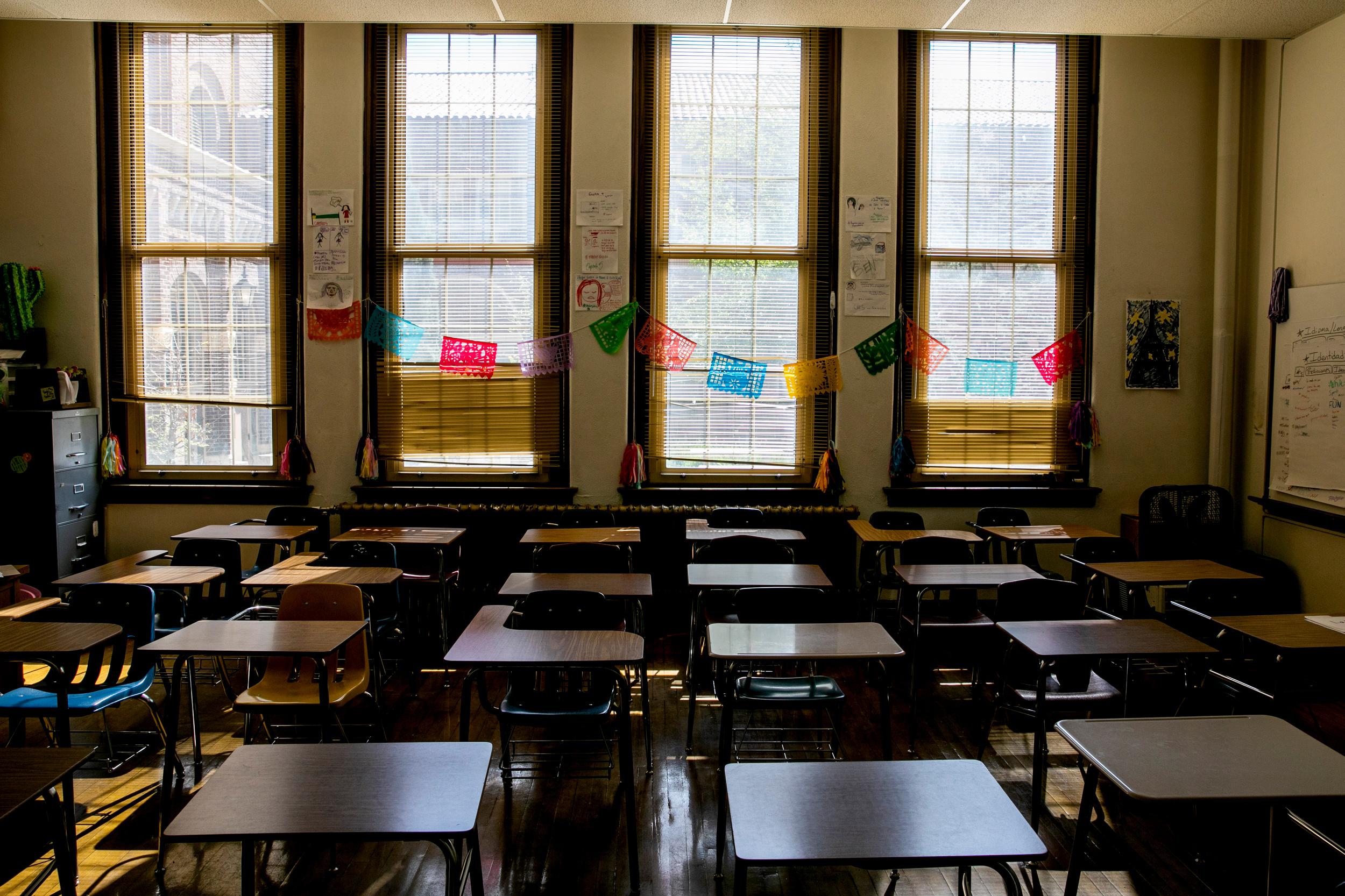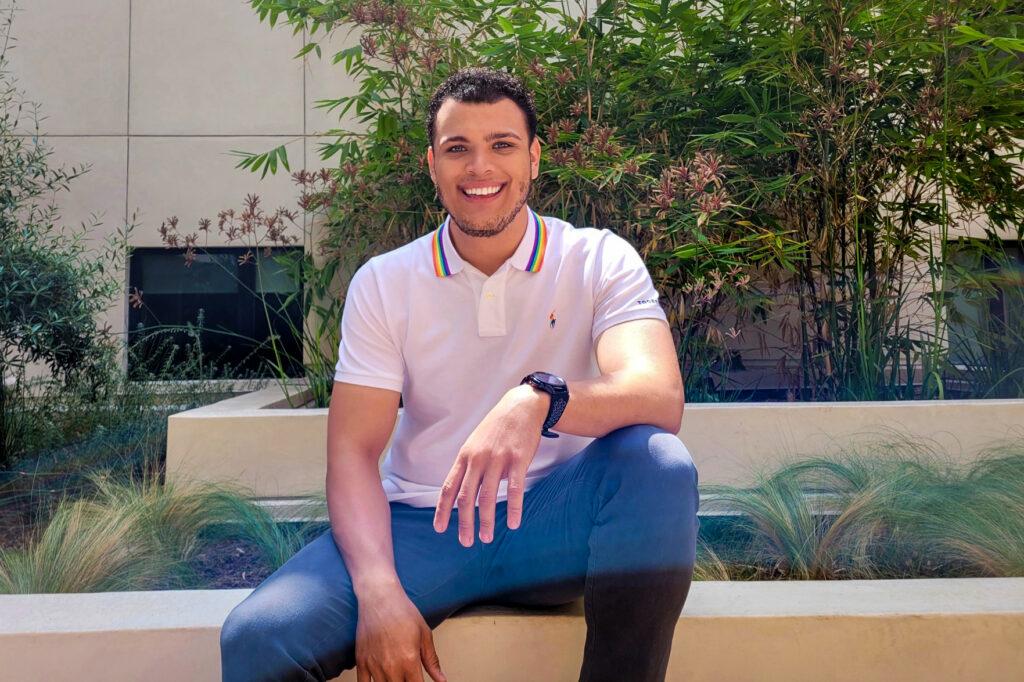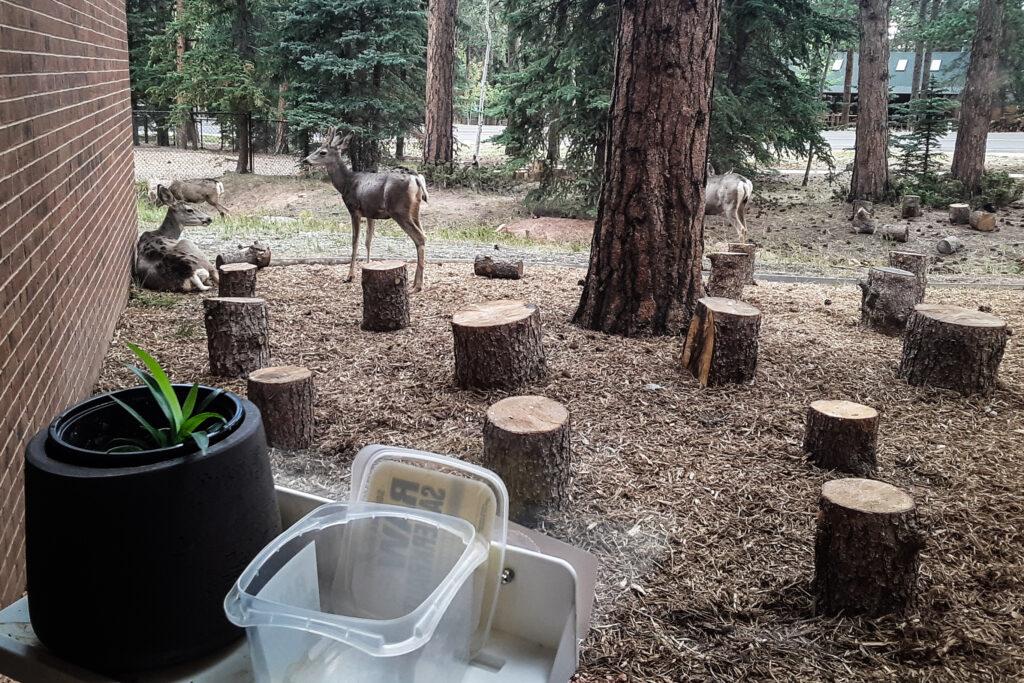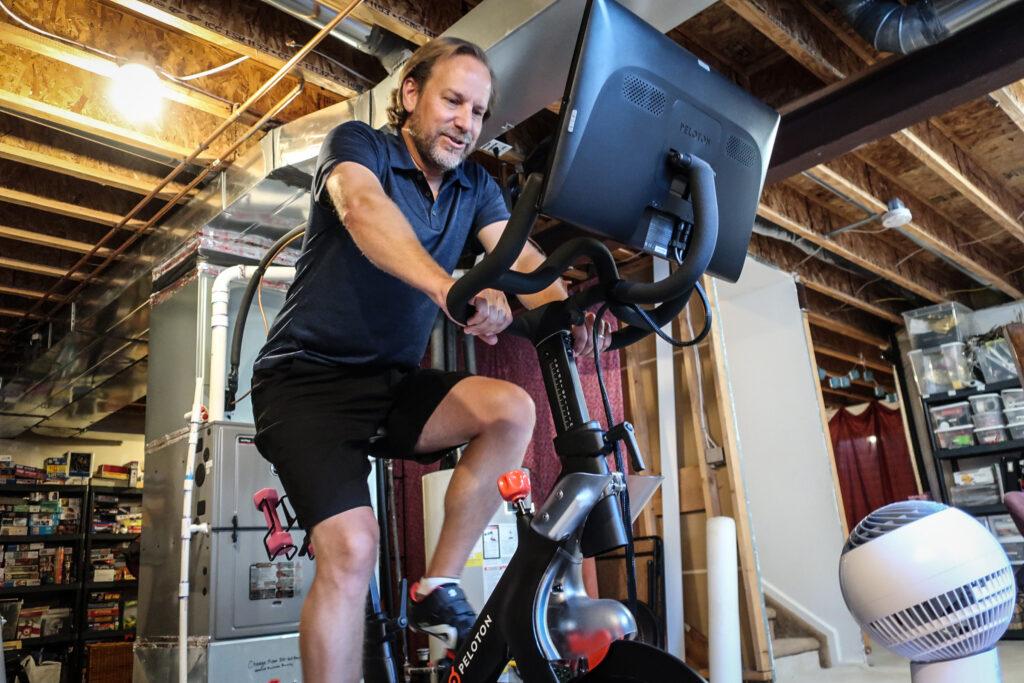
Jason Cianfrance has two words to describe the past school year.
“Chaotic …. challenging.”
But the 27-year veteran math teacher in the Adams 12 school district is quick to add the year was also filled with learning, “something that just challenged all of our paradigms of what we have gotten comfortable with in education.”
Cianfrance, many teachers across the state, and a group of education researchers, now want to use the lessons those teachers learned during the pandemic to better education into the future.
For many, the last school year was one of the hardest teachers have ever experienced. But the year forced many to reflect on how they normally do things in a classroom: What’s good to keep, but what could be improved? Cianfrance said the pandemic gave teachers a kick, that they just can’t be comfortable recycling lessons and doing things how they’ve always been done.
“I think the worst thing we could do next year is say ‘Whew, it's back to normal’ because back to normal means we didn't learn anything from the 18 months that we went through that was chaos,” he said. “There have to be things that we can take from that, that are going to make us be better … and make students learn better.”
Cianfrance was one of several teachers across Colorado interviewed by other educators — teacher policy fellows — from Teach Plus Colorado, an organization that trains teachers in education policy and advocacy. Their task: gather ideas for how the pandemic could help accelerate change to K-12 education. The fellows then compiled educator insights into a report.
So, what did teachers learn from the pandemic and what may change?
Jason Cianfrance said the biggest challenge during the pandemic was preparing to teach a lesson from his kitchen and seeing 30 black rectangles on Zoom. He didn’t really know what was happening on the other side of the camera. Teachers saw how isolation ground down their students — and them.
It reminded him of how much students need each other. How much they need to interact and collaborate together in-person. Sometimes he’d put kids in virtual break out rooms. He'd pop in and see five black screens that were muted.
“They need each other (in-person), they need interaction,” he said.
Then Cianfrance learned about Pear Deck. The tool is like an interactive slideshow. With the click of a button, he could see his students’ thought processes as they answered questions. The pandemic made teachers more comfortable and bolder about using new technology. Next year, he’ll project the program at the front of the class, so kids can learn from each other’s work.
“It’s a way to capture things that in the past were sort of fleeting,” he said.
Cianfrance will still have students do some math via pencil and paper. But he envisions saving reams of paper now. And he’s using other technology tools, too. One allows him to see which students have actually watched a lesson — as homework, of course — and to embed questions that students can’t skip. “Then we get to actually jump right into class tomorrow from a collaborative standpoint of ‘What did you think about that? What did you learn about it? Can you do some problems based on that?’” Cianfrance said.

Adrian Parker taught chemistry at DSST Conservatory Green in Denver last year. He said he took to recording all of his classes for a “virtual library” — lessons on demand online that students can refer back to. For Parker, it’s mind boggling that he didn’t do it pre-COVID.
“It just provides access to knowledge right there at their fingertips,” he said.
Now, Parker thinks high school teachers should record all lessons. It could also help schools who typically have to scramble to find substitute teachers.
“I think that would relieve a lot of pressure from teachers who feel like ‘I need to go to school, even if I'm sick or can't go in,’” Parker said. ’
It’s not just flexibility for teachers that teachers want, in the report, teachers said allowing some students with other responsibilities outside school to get their school work done on a flexible schedule, opens up more doors.
They also made other recommendations, like ensuring all students have access to high-speed, reliable internet.
Without it, students become disengaged.
Elementary students: Is the “rush, rush, rush, cram it in” of the past several years really the way to go?
In rural Colorado, the pandemic had elementary teacher Nicole Melby pivoting between Kindergarteners, first, second and third graders. She was struck by the amount of time lost during hybrid and remote learning. It made her think about the pace of education.
“Over the last several years education has been a ‘Rush rush, rush, cram it in, do more, achieve more, higher test scores,” Melby said.
She said teachers can push and try to go really fast and cram everything in – some students are capable and ready — but some just aren’t ready developmentally. She was reminded of what’s most important: Are kids growing academically? Are they gaining ground? The year pushed teachers to evaluate what’s most important.
“You have to narrow it down to top priorities, what is absolutely essential and what things are a bonus,” she said of the pandemic year.
Next year, of course, a school can’t unilaterally decide to teach fewer state standards. However, Melby said the pandemic led teachers to find ways to teach more efficiently, combining concepts in one lesson.

Melby said the pandemic made crystal clear what activities are critical to do in person with students, and what things can be left for outside of school. Focusing on interpersonal skills – like how to interact with others, wait your turn or solve a conflict – was critical in person because so many kids had lost those skills. Second, Melby said it was critical to work on phonics, the building blocks of reading, in-person. Kids have to see teachers’ mouths to see how sounds are formed. That was hard with masks on. So…. they went outside.
“Our school developed a lot of outdoor classrooms and we spent a lot of time outside,” said Melby.
Parents donated logs that were cut up to become chairs and tables. Outdoor learning will become a permanent feature at her school.
One silver lining of the pandemic was that many teachers were able to build stronger relationships with students’ families. Why not all the time?
Because meetings could be set up virtually, communication between teachers and parents went up. Teachers said in the report that they’d like their schools to designate frequent and consistent time for teachers to connect virtually with parents.
Nicole Melby’s school hosted virtual parent nights once a month on basic concepts for parents to help their child learn. With virtual parent-teacher conferences, Melby saw much higher attendance. Parents could jump on a call from a break room at work. The school hopes to use this option and make parent communication more frequent.
Being able to connect with families online was sometimes a better option for 10th grade chemistry teacher Adrian Parker. It helped in a case where a student’s mother had been hospitalized for COVID-19. The student wasn’t online much, burdened with child care responsibilities, and getting low grades. When the mother and student could finally connect with Parker from their home via Zoom, Parker said the less ‘official’ environment allowed everyone to be calmer and more comfortable and let their guard down a bit.
“It was just more convenient,” he said, as they worked out a plan to get the student back on track. “And I think that kind of allowed us to have a more authentic conversation, which I usually don't have that early in the year.”
Studies have consistently shown that family engagement is highly correlated to student success.
The 100 pound elephant in every classroom: Tests. Will they change?
Some teachers discovered one of the biggest areas that could stand to be improved in the upper grades was — testing. Math teacher Jason Cianfrance caught on quickly that some students were using a phone app to scan and solve math problems, effectively cheating. Teachers tried to outsmart them. That didn’t work.
“We sort of felt like the Olympic doping committee … the dopers were half a step ahead of the tests that find the performance enhancing drugs,” he said.

But Cianfrance soon realized if a student could ace a test using an app, was he really testing if they knew the math? Maybe the test relied too heavily on memorizing content and skill-based procedures? Perhaps there should be more problem-solving questions – or asking students what they think about a question or playing teacher and finding what someone else did wrong in solving a question.
Parker agrees.
“Reanalyzing how we assess students is huge,” Parker said.
Yes, assessments are valuable, but not everything is about data, he said.
Some teachers are mulling if there are ways to assess all the so-called soft skills the pandemic forced upon kids, skills that will serve them their entire lives: working independently, explaining and showing work in different ways, managing time, advocating for themselves.
The pandemic emphasized to Parker how few kids know how to take notes, a much higher-level skill than purely copying what a teacher says. He said the intense focus the system places on grades pushes some students to memorize or cheat. The singular drive to get an “A” affects their ability to learn and grow, said Parker.
They’re not all new problems, but the pandemic made some of them worse.
“It stunts them so quickly because … their focus isn’t on understanding the material,” Parker said. “The focus is getting the grade.”
The pandemic reinforced to some teachers that maybe it’s better to teach and assess a set of key standards, leaving more time to focus on all the social and emotional skills teachers know are critical to work and life.
Will teachers have the freedom and space to implement changes and the insights they gained during the pandemic?
Teachers are part of a massive and daunting system of evaluations, standards, test scores and performance metrics for students. That system can make it hard for teachers to take risks. Parker said when it takes years to perfect a curriculum, it can take a lot to break the mold and try new things. He hopes teachers remember the biggest lesson of the pandemic: how quickly they can pivot — and how flexible they can be.
“If we can do that in a pandemic or virtually within three weeks, we can teach a different lesson differently next year,” Parker said.
Finally, the pandemic made many teachers realize how much they need to collaborate with each other to be successful.
“It has made us push and fight for collaboration again, not only with parents but with each other because where the greatest change and what is absolutely best for students comes when you have many great minds at the table,” said Nicole Melby, the elementary teacher.
Teachers are in rest and recuperation mode now. But Melby, who hopes to be able to focus on a room full of first graders in person next year, is excited to reunite with her colleagues to reflect on the “unpredictable” year that was and generate more ideas.
She said the pandemic left little golden nuggets for the practice of teaching.
“Sometimes it takes these things that jolt us to bring us back into a perspective of evaluating what we’re doing,” she said. “And not falling into a sense of complacency.”








